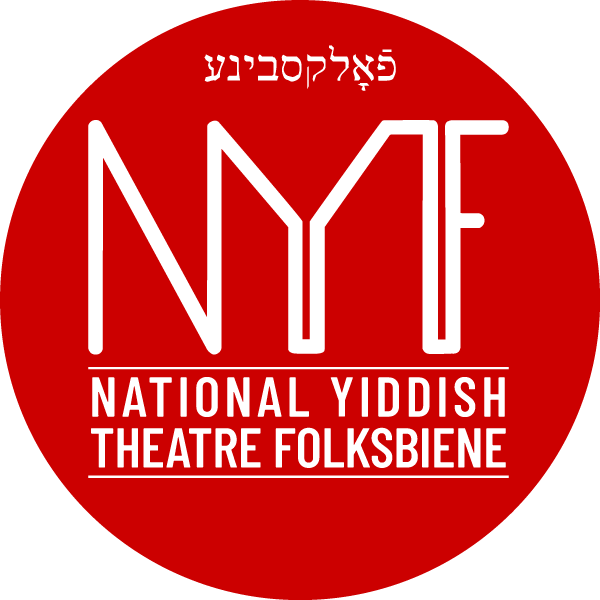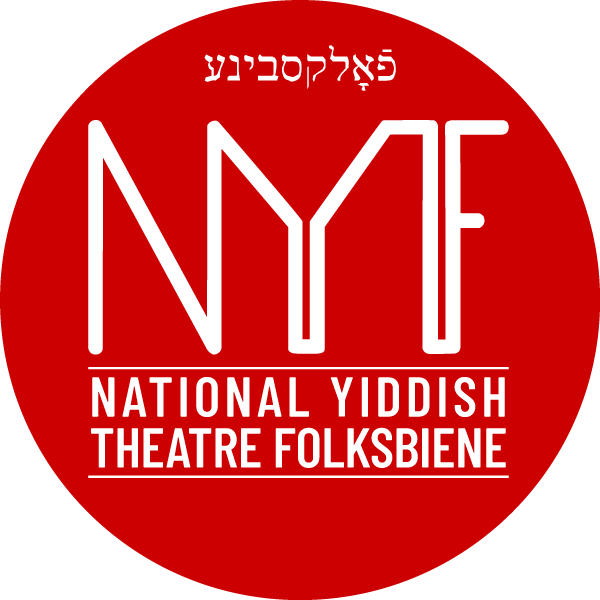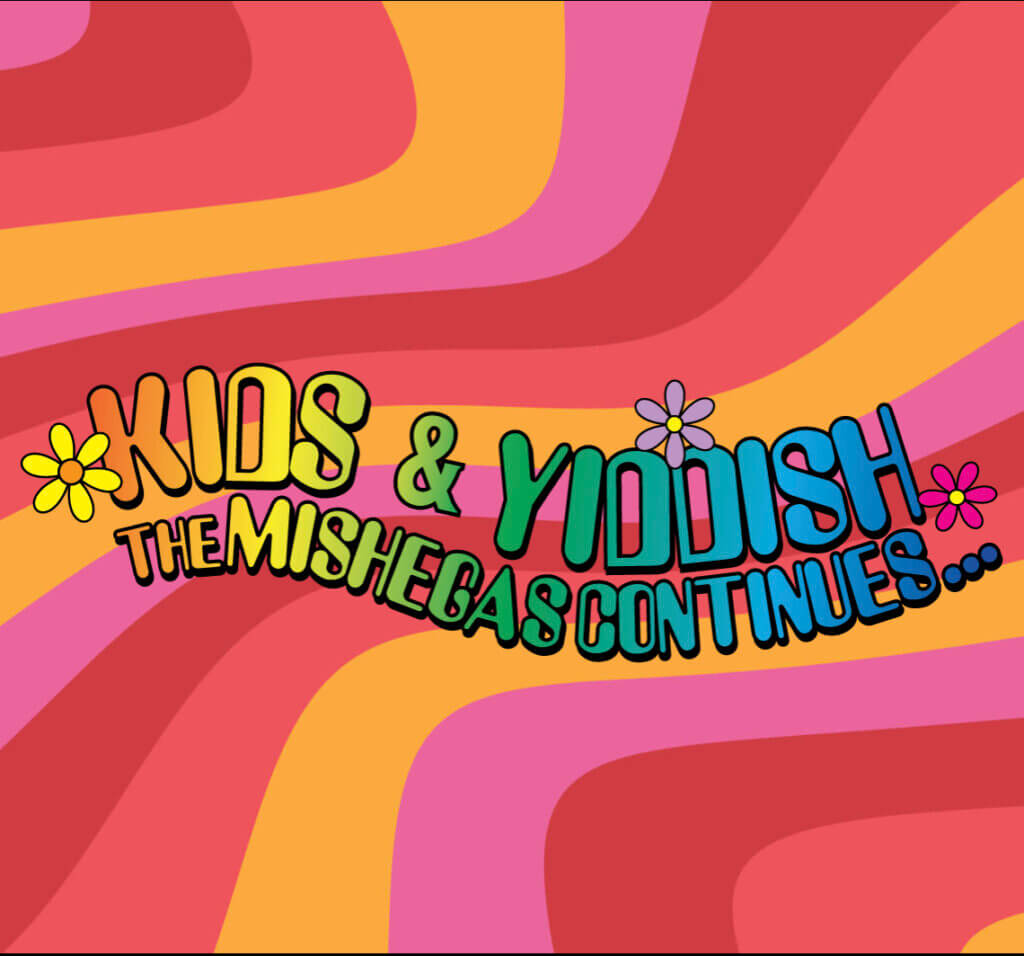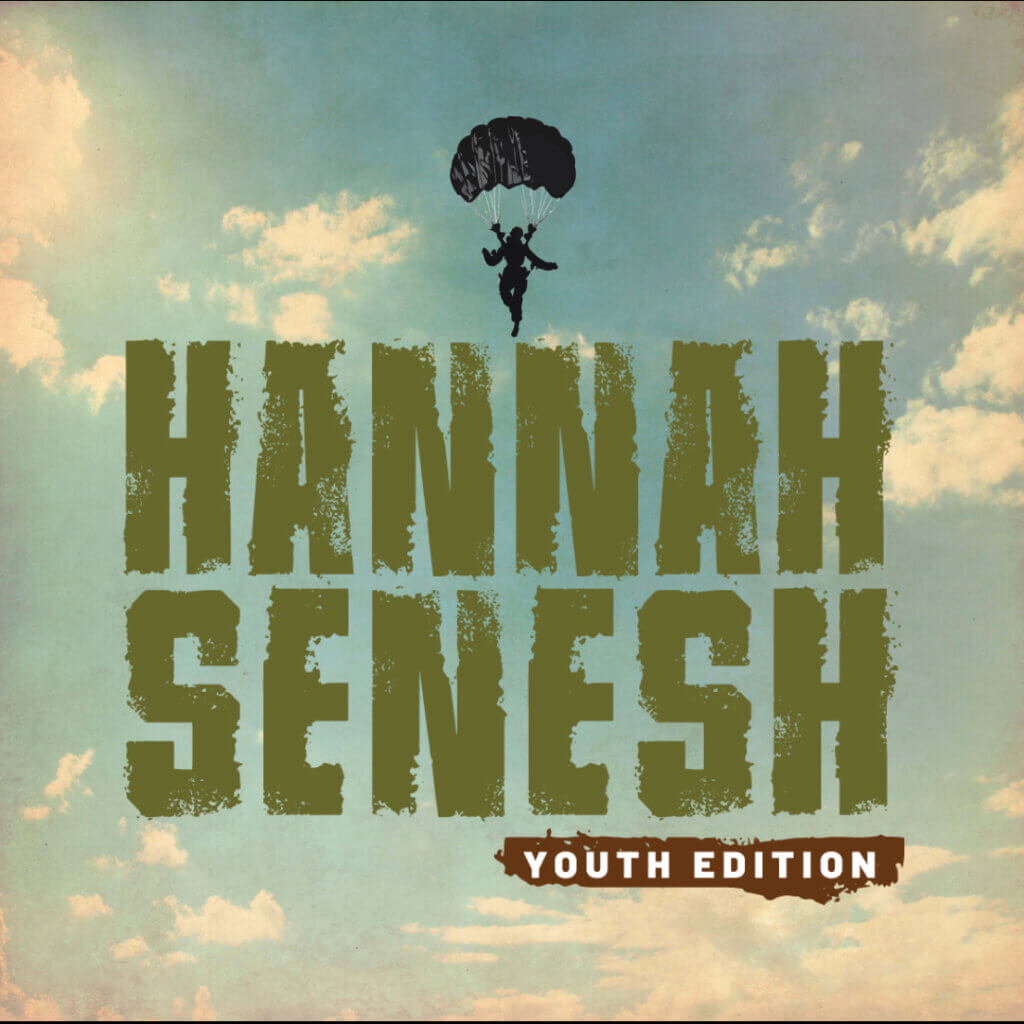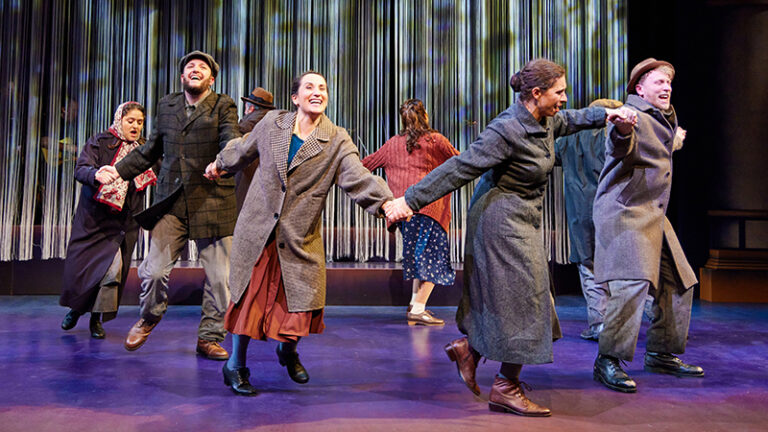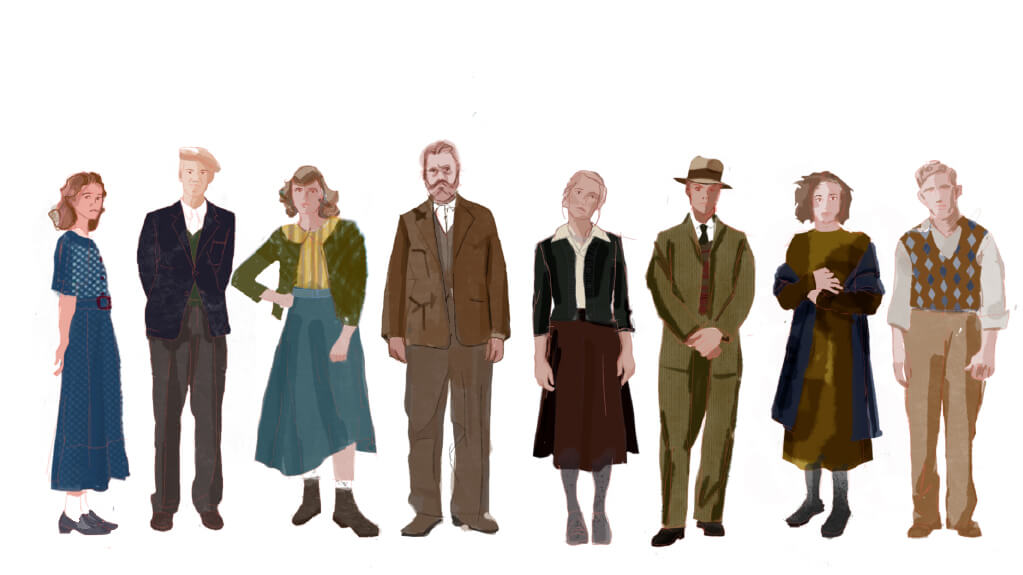
A look at how the choreographer and costume designer are bringing Amid Falling Walls (Tsvishn Falndike Vent) to life on stage
This week, we want to introduce you to two of the members of the creative team behind our new production, Amid Falling Walls. Tamar Rogoff is a choreographer, filmmaker and teacher, and Izzy Fields has designed for the theater, television, and opera and has been with the NYTF family since 2009.
With just over one week before the show begins previews, both offered insight into their vision for the production and how the costumes and choreography can define the era.
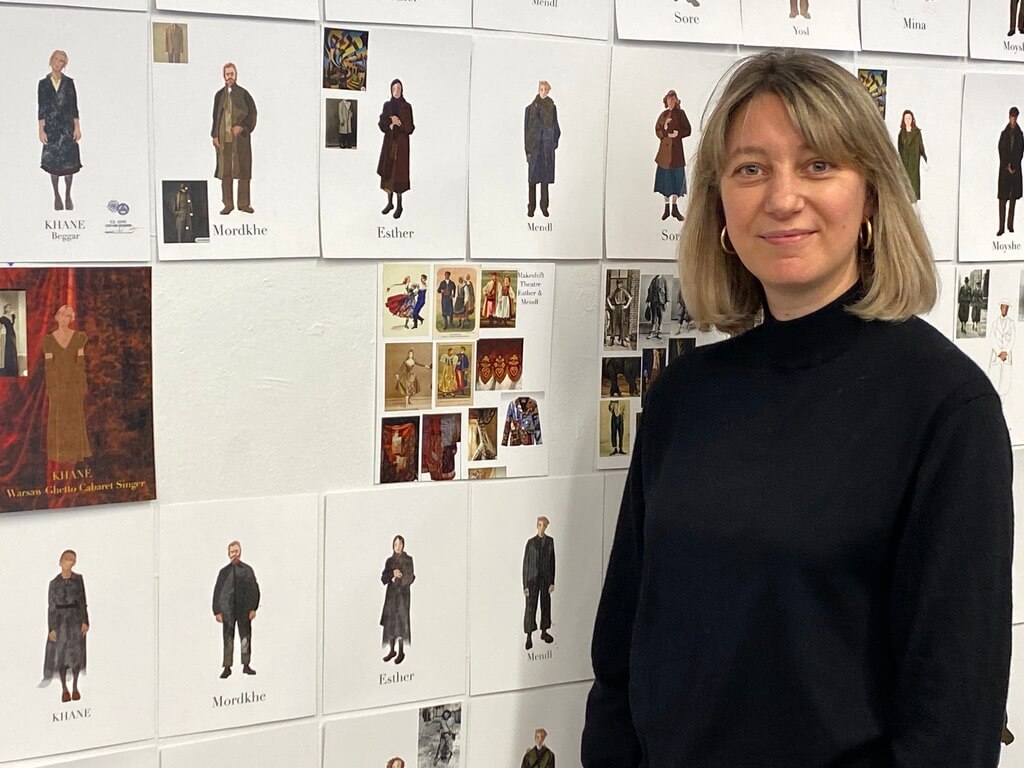
Izzy Fields
Describe any collaborative efforts between yourself and the director, choreographer, or other members of the creative team to ensure the costumes aligned with the overall artistic vision of the production?
A goal of our team is to exhibit the many different theatre spaces of the ghetto. Many theatre spaces were held in secret while some cabarets had jazz, liquor and were open to whoever had the money to spend.
One secret theatre space is the makeshift theatre scene with two young lovers dressed in a makeshift version of traditional costumes of Poland. It’s supposed to be their interpretation of these cultural dance costumes. The idea Motl Didner (director), Jessica Alexandra Cancino (set designer) and I came up with is they pulled some items out of a trunk and cobbled it all together just like the patchwork white curtain they bring on as their backdrop.
This changes when we enter the Warsaw Ghetto cabaret, our singer Khane is in a bright satin gown with gloves and fur against a dramatic red theatre curtain, to show this environment as elegant, polished and full of people spending money.
What are some costume details or elements that you believe are particularly impactful in conveying the story and emotions of the show?
The director, Motl, and I felt it was important to not show literal striped uniforms when we enter the slave labor camp scenes. We see those pictures through projections, so instead, we wanted to allude to those uniforms through texture and silhouette. The costumes are grey, highly distressed and dirty to show their plight.
What is the role of costumes in preserving the memory and history of the Holocaust, and how does “Amid Falling Walls” contribute to this through your design work?
It’s important to show these people, not as characters, but as living, breathing human beings. I’m trying to present them as authentically as possible. They have been surviving in the ghetto for quite some time so their clothing is worn through. Their daily goal is to keep their families safe and their dignity intact in the most trying of times.
Reflecting on your experience working on this show, how has it influenced or changed your perspective as a costume designer and artist?
I have designed numerous shows about the holocaust, usually set in Europe. The thing I always keep in mind is subtlety and pulling back. Especially when we see them as civilians, their clothes are not for show, they are for survival. They are layering constantly to keep warm. Their shoes are low to the ground to walk the streets of the ghetto. Things that don’t match or seem off in a way is particularly helpful to convey they are using what is on hand.
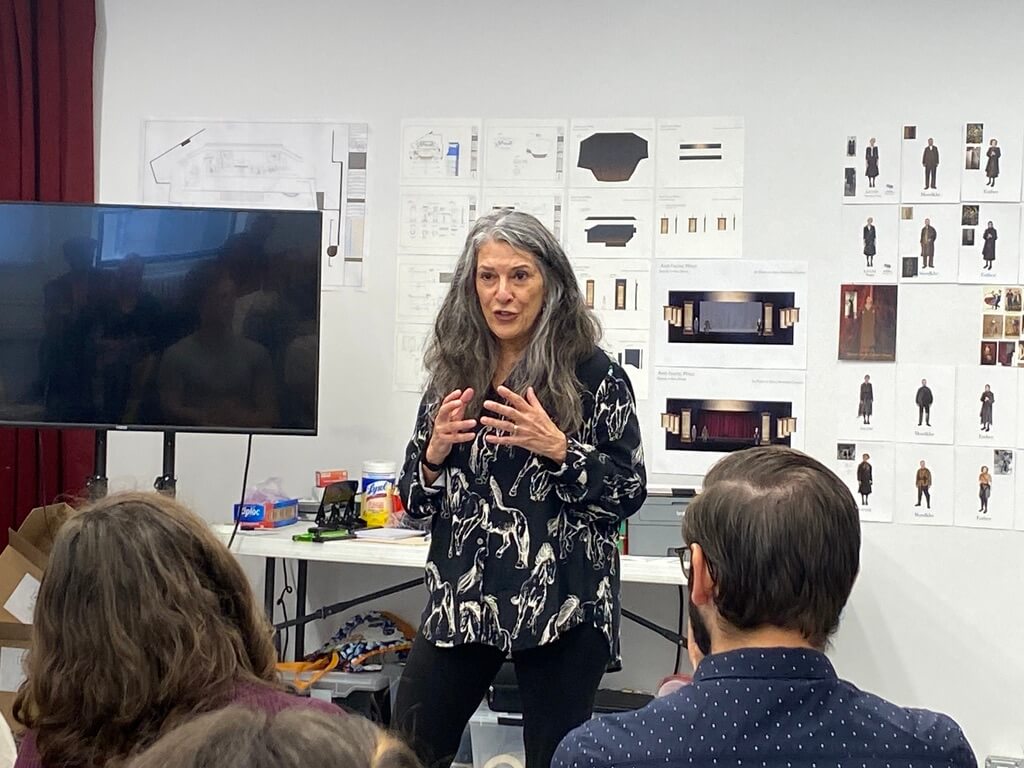
Tamar Rogoff
Can you tell us about the inspiration and creative process behind choreographing “Amid Falling Walls” for NYTF?
I am inspired by the idea that performance happened despite and in the midst of a ghetto steeped in fear and sadness. Where did the performers, in this case, Cabaret artists find the focus and the strength to step out of their nightmare reality and sing and dance? Why and how? This question haunts me. Our creative process in 2023 seeks some answers,
What are the specific challenges in choreographing a musical set during the Holocaust, and how did you approach them?
Choreographically I need to explore how a lively show tune is coupled with lyrics that reflect the underbelly of what was happening—the nightmare under the razzmatazz.
Are there any particular dance styles or techniques that you integrated into the choreography to enhance the storytelling?
Body Scripting is an approach I have been evolving for years. It addresses movement through the focus on the anatomy. It is helpful in the non-cabaret scenes where subtly we try to address the body in trauma and the way the energy rises as they transition from near death to the glory of being partisans.
What emotions or messages do you hope the audience will take away from the dance sequences in this show?
That humans are resilient. That they reach for beauty, humor and truth at the darkest hour. The spark inside remains lit and capable of creativity until no breathe is left.
In a show like “Amid Falling Walls,” how do you strike a balance between honoring the seriousness of the subject matter and creating moments of beauty and hope through dance?
All bodies biologically seek a positive direction. That’s their nature. We want to live. Its inherent in us to heal, overcome and go forward. Even within the extreme challenges of the Holocaust we saw the will to survive and the will to fight back.
What is the collaborative process like with the dancers, and how do you communicate the nuances of the choreography to them?
As a choreographer, how do you believe “Amid Falling Walls” contributes to the broader conversation on the Holocaust and the power of art to remember and reflect on history?
